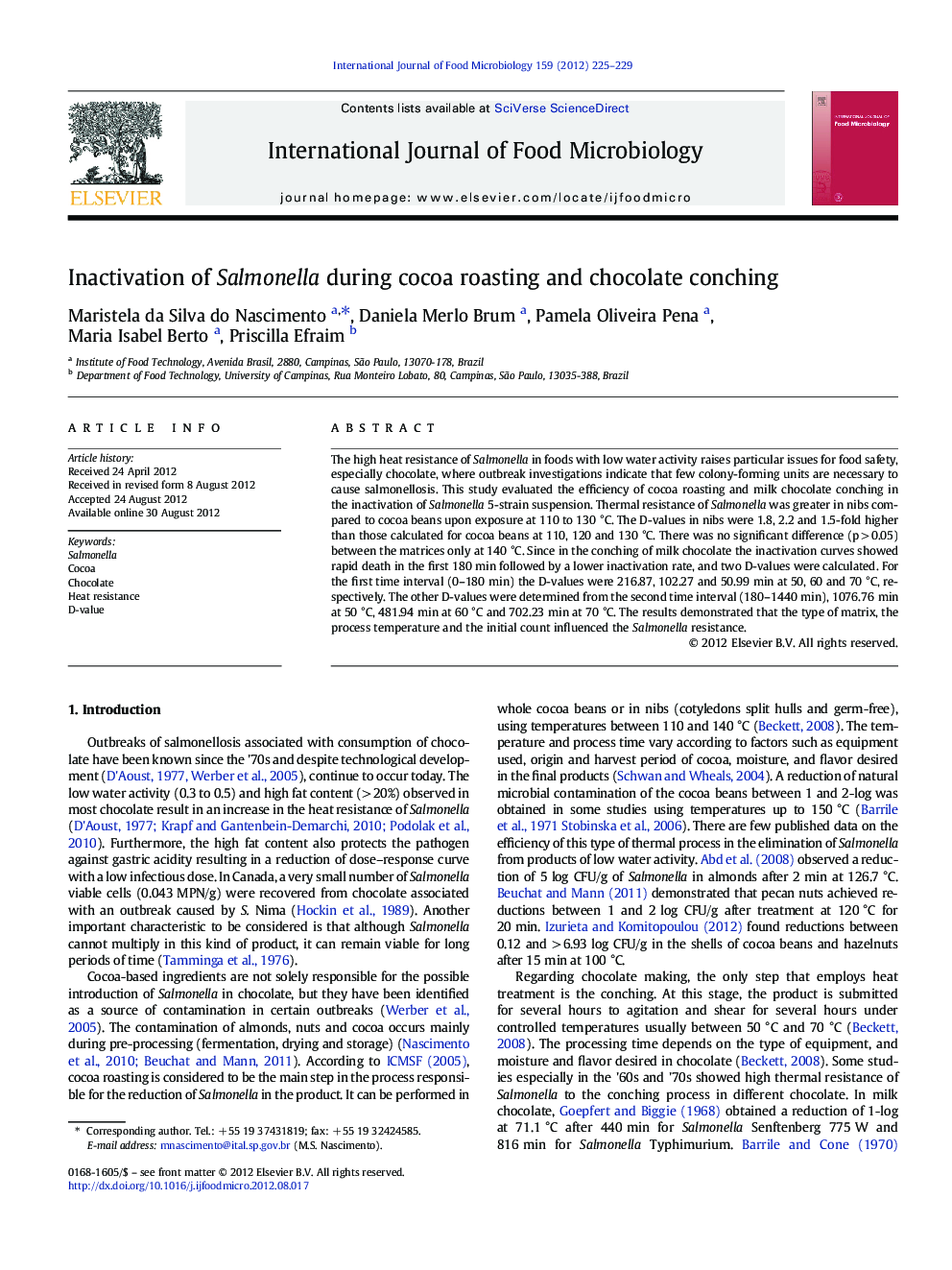| کد مقاله | کد نشریه | سال انتشار | مقاله انگلیسی | نسخه تمام متن |
|---|---|---|---|---|
| 4367473 | 1616636 | 2012 | 5 صفحه PDF | دانلود رایگان |

The high heat resistance of Salmonella in foods with low water activity raises particular issues for food safety, especially chocolate, where outbreak investigations indicate that few colony-forming units are necessary to cause salmonellosis. This study evaluated the efficiency of cocoa roasting and milk chocolate conching in the inactivation of Salmonella 5-strain suspension. Thermal resistance of Salmonella was greater in nibs compared to cocoa beans upon exposure at 110 to 130 °C. The D-values in nibs were 1.8, 2.2 and 1.5-fold higher than those calculated for cocoa beans at 110, 120 and 130 °C. There was no significant difference (p > 0.05) between the matrices only at 140 °C. Since in the conching of milk chocolate the inactivation curves showed rapid death in the first 180 min followed by a lower inactivation rate, and two D-values were calculated. For the first time interval (0–180 min) the D-values were 216.87, 102.27 and 50.99 min at 50, 60 and 70 °C, respectively. The other D-values were determined from the second time interval (180–1440 min), 1076.76 min at 50 °C, 481.94 min at 60 °C and 702.23 min at 70 °C. The results demonstrated that the type of matrix, the process temperature and the initial count influenced the Salmonella resistance.
► Survival of Salmonella in chocolate manufacturing
► Thermal resistance of Salmonella in cocoa roasting
► The conching process was not enough to eliminate Salmonella.
Journal: International Journal of Food Microbiology - Volume 159, Issue 3, 15 October 2012, Pages 225–229